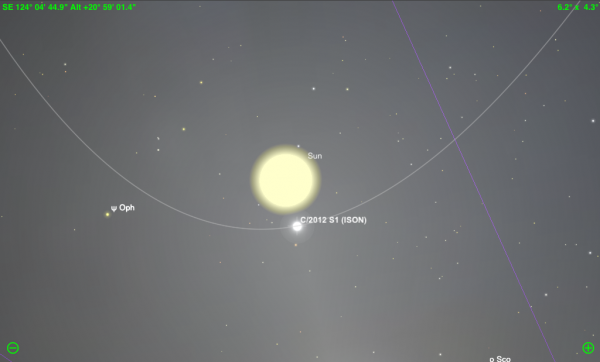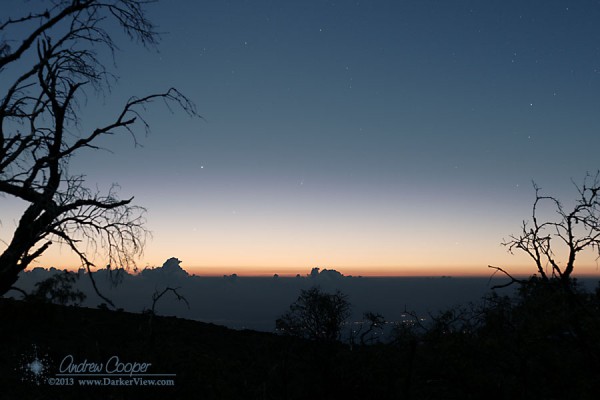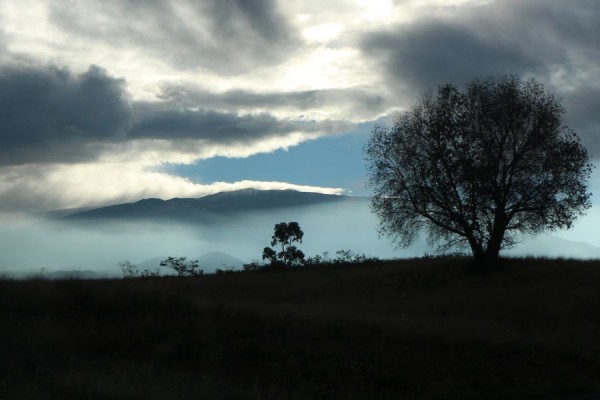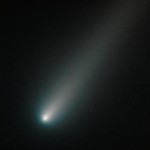Plotted below is the path of comet ISON through perihelion. The image is zenith up on the morning of November 28th from the island of Hawai’i. The actual moment of perihelion will be Nov 28.77501UT (18:36UT or 08:36HST).
A few things are notable… The obvious one is how close the comet will get to the Sun. Not just in absolute terms, which is really close. But rather how close it will look to us. The comet will be under 30 arc-minutes from the center of the Sun, recalling that the Sun is about 30 arc-minutes across. The comet will not pass behind the Sun from our point of view. While we may not be able to see it while lost in the solar glare, it will remain in the view of those solar monitoring spacecraft that are near the Earth.
Separation will help in trying to spot the comet during the day. During the 27th, 28th and 29th the comet will be very close to the Sun. On the morning of the 29th the comet will be only 4.5° from the Sun. Best bet to attempt a daytime peek may be on the 30th or later, when the comet will again be more than 7.5° from the Sun. Look for the magnitude estimates and be prepared to give it a look.









